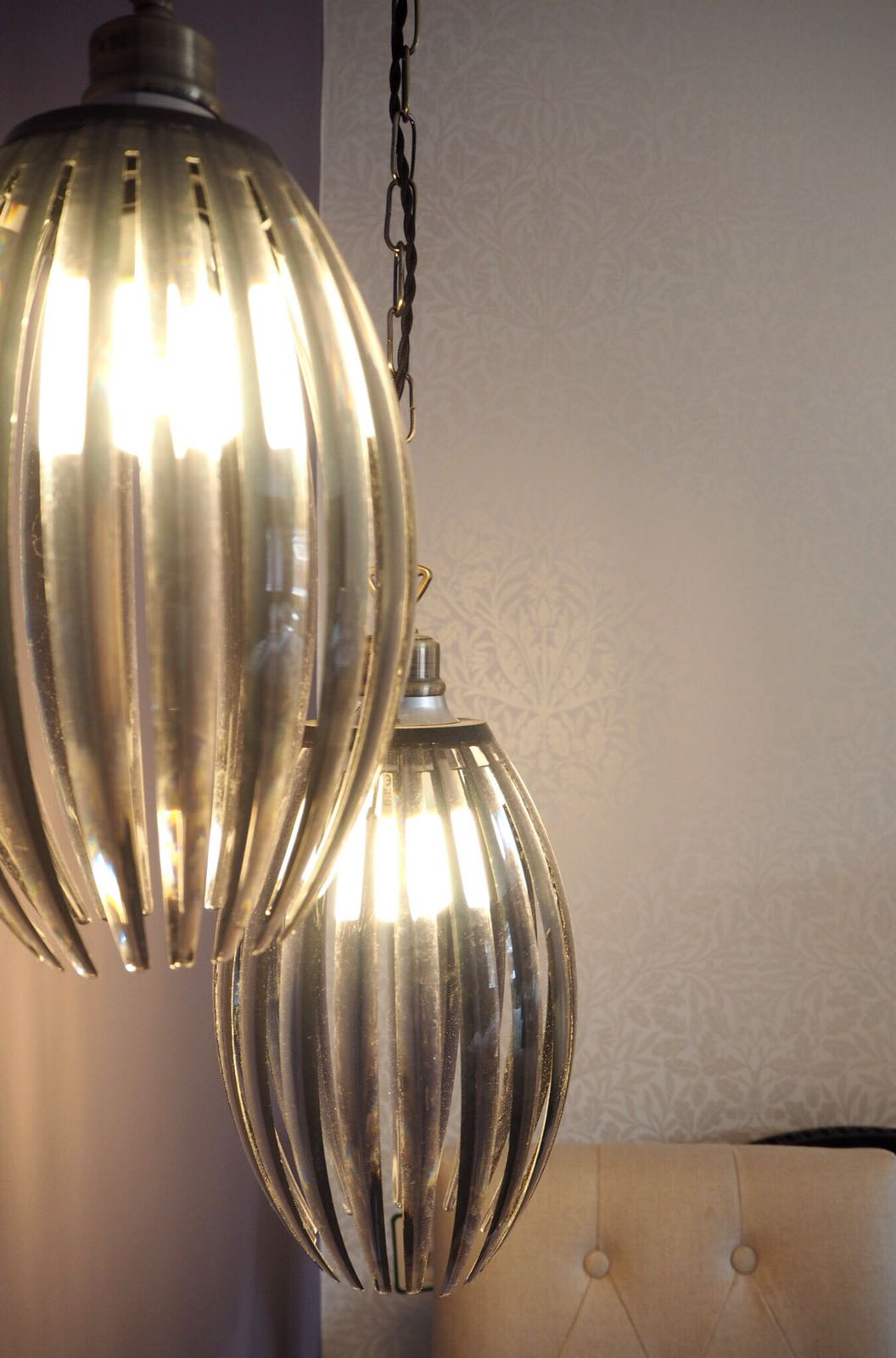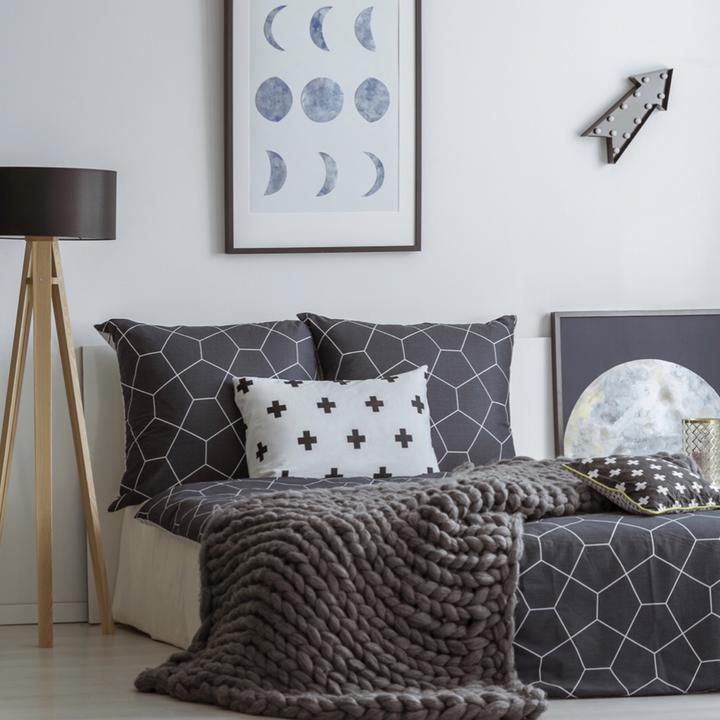The very first key points that you would learn as an interior designer are the 7 main elements of interior design. These include space, light, Form, Texture, Colour, Furniture and objects.
Space is a key element to interior design and it is important to know what the limits of the space that you have to work with. You have to take into consideration what the space will be used for, the size of the space and also how the space will limit your design. Designs are created in response to the buildings shell and are limited to walls, floor, ceiling, doors, windows, any supporting beams and columns also including fitted or built-in furniture. Space planning is fundamental to a successful design scheme. How the space is used is key to the atmosphere of the room. A large open space with little furniture gives a huge feel of space and freedom however it can sometimes feel a bit lonely and bare. On the other hand, a smaller space with lots of furnishings, feels cosier and more inviting. However with a smaller space you have to be aware not to over furnish as it may become cluttered. Open plan living is becoming more and more popular. And has therefore brought about the need to ‘Zone’ areas in terms of their use.

Light is another key element to interior design, it affects the way we perceive colour and texture. It can come from a natural source such as windows, open doors or skylights, or it could come from an artificial source such as lamps, pendant lamps, floor lamps or task lamps. Lights can create the ambiance and mood of a room and it is therefore essential part to a design. It’s important to think about the ‘type’ of artificial light that you are putting in whether it’s task lighting, ambient lighting and also whether you are using warm white or cool white. This choice will come down to the use of the room, the volume of natural light and the ambiance that you want to achieve.

Form is when the lines in a space come together in a three dimensional way adding depth, length and width. Good use of proportions, texture or colour and scale are essential to achieving good form.Form refers to the third dimension. How the object sits in the room contributes to the form of the room, also the shape of the walls and how they define the space. Form is the element of interior design that gives depth to a room. It is important to consider scale and proportions. Bringing curves into a room makes it feel more feminine and softens the room. Having lots of boxy square forms in a room would feel very masculine as it would emphasise strong linear lines. It is more pleasing to the eye to have forms that complement each other. “For example, Bookshelves are often much more pleasing to the eye with the addition of free form sculptures and round accessories to balance the linear look of the book spines.” (Wanson, E. 2010)

Texture adds depth to the finish. Texture changes the way light is reflected within a space and can be used to create various atmospheres by changing the look and feel of the room. Textured wall coverings, plaster, stamped leather, cut velvet, shaggy rugs all add texture to an interior. Textures have a big impact on a design scheme. They affect the way light and sound is reflected around a room. Having different textures in a room makes it more interesting and inviting. It stops the rooms feeling flat or dull. Texture also has an effect on the warmth of a room. If there was very little or no texture in a room it would feel very cold and not very cosy where as a room with an abundance of texture would feel very comfortable and warm. Soft textures are warm and inviting. Whilst smooth textures can feel quite cold. Totir (2012) commented that “Displays combining fabrics or finishes of very different temperatures can be visually very engaging; using textures of similar temperatures brings a sense of quiet harmony to a room” (Totir L. (2012) The role of texture in interior design)

Colour can arouse emotion or symbolically represent aspects of culture or society. It sets the mood and is responsible for making a room feel warm or cold, larger or smaller, friendlier or more serious. Colour can be used to attract the attention of main features or to deflect from those that are less attractive. Complimentary colours may create contrast and drama in an interior, while similar colours create harmony. Colours have a massive impact not only on the appearance of a room but also on how the room makes you feel. Colours create different atmospheres and can transform the feel of a room. Using physiology of colour can really enhance a room and help it to achieve its function with the right effect. Using light or dark colours can also change the space of the room. Dark colours make a room appear small and cosy whilst lighter colour give a sense of space. They can also make a room feel cold or warm. Using a lack of bright colours can also be dramatic. Creating a nearly all white room is very sleek and classic. The brilliant white makes a room feel big. However using different textures stops the room from feeling cold and lonely. White walls and furniture create a calm and smoothing mood.

Furniture is very important in an interior. It determines the look and style of a space as well as providing practicality and comfort. All the items of furniture should supplement each other and not overcrowd a space. Furniture can be for decorative use as well as practical.
Objects add the finishing touches to an interior. They add character and reflect the tastes and interests of the owners, making the interior more personal and homely.

The purpose of interior design is to create a comfortable pleasing interior space. Objects and furniture are designed in specific areas to achieve maximum impact and effect to suit the needs of the owner. It brings character and adds a personal touch to a home.
Sarah x
______________________________________________________________________________________________________________________________________________
At the end of each blog we would love to create a question and answer section. If you have any questions about our business journey or any interior design related questions then please email us at: This email address is being protected from spambots. You need JavaScript enabled to view it. with the subject ‘Q&A blog’ Or follow our social media links!

